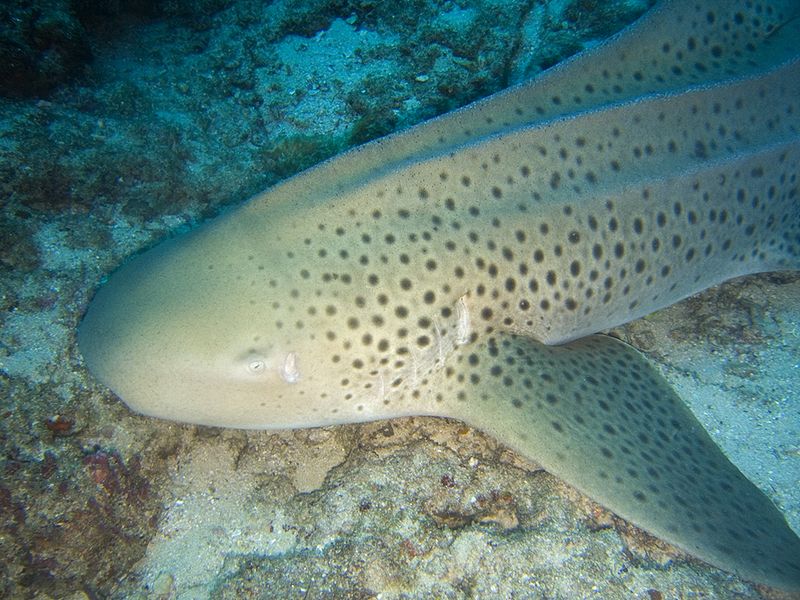

Putative Male – Male Agonistic Behaviour in Free-Living Zebra Sharks, Stegostoma fasciatum. (as Stegostoma fasciatum)Brunnschweiler, J.M. Perth : Tropical Reef Research 3 vols, 1260 pp. Perth : Western Australian Museum 292 pp. Marine Fishes of Tropical Australia and South-east Asia. Stegostoma tigrinum (FOrster 1781) ReferencesĪllen, G.R. Squalus tigrinum Forster 1781, Zoologia Indica Selecta Tabulis: 24, Pl. (2019) reviewed the nomenclature of this species and suggested that the original name Stegostoma tigrinum Forster, 1781, should be used as the senior synonym for the species. This species has previously been known as Stegostoma fasciatum. IUCN Red List : Least Concern (Australia), Vulnerable (Worldwide).The species is heavily fished in shallow water fisheries throughout its range except in Australia. During summer months, reproductively mature adults aggregate in large numbers in coastal waters of southern Queensland and northern New South Wales.įeed at night mostly on gastropod and bivalve molluscs, and to a lesser extent on crabs, shrimps and small fishes.įemales lay large (17 cm long) tough egg capsules that become anchored to the bottom by tufts of hair-like filaments or fibres.īanded neonate Zebra Sharks have been seen swimming close to the surface, strongly resembling banded sea snakes in colour and body form as well as the undulatory swimming movements (Dudgeon & White 2012). Individuals often rest on the sandy bottom, and both juveniles and adults may be seen swimming near the surface. Zebra Sharks inhabit shallow inshore and offshore waters, often on and around coral and rocky reefs and on sandy plateaus near coral, at depths to at least 62 m. Elsewhere the species occurs in the tropical Indo-west Pacific. Also found around a number of Coral Sea islands. Recorded in Australia from Port Gregory, Western Australia, around the north to Montague Island, southern New South Wales. They are kept in aquaria.Stegostoma tigrinum (FOrster 1781) More Info They are taken in many fisheries and their coral reef habitat is threatened. Vulnerable on the International Union for Conservation of Nature (IUCN) Red List. Tend to be sluggish by day and more active at night. Often seen resting, propped up on their pectoral fins, mouth open, facing the current. Lays large dark brown to purple-black egg cases anchored to the bottom with tufts of fibers. Prey – Mollusks, crustaceans and small bony fishes. Indo-west Pacific tropical and continental and insular shelves, eastern Africa to Japan, New Caledonia and Palau. Adults and juveniles rest in coral reef lagoons and channels, but the striped young are rarely seen and may be in deeper water (>50 m). Most of these sharks average slightly more than 8 ft, and maximum size is thought to be just over 11 ft. Males mature between 4.7 to 6 ft, while females mature around 5.5 to 5.75 ft. The shark is approximately 8 to 14 inches when hatched. These saddles break up into spots in sharks 20 to 35 inches in length, and are more uniformly distributed on large sharks.

The young are yellowish below, dark brown above with vertical yellow stripes and spots separating dark saddles. Its body has very distinct ridges and spots. A large, slender shark with a large broad tail as long as its body.


 0 kommentar(er)
0 kommentar(er)
